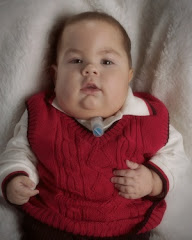I am outta here!! Luckily Aidan only had to spend a few days in the PICU. What we originally thought might be pneumonia turned out to pulmonary edema. Thankfully Aidan was able to recover quickly. Unfortunately Aidan had to be placed on hold for the kidney transplant list until he is cleared by the doctors; hopefully by Labor Day.
Pulmonary edema is fluid accumulation in the lungs. It leads to impaired gas exchange and may cause respiratory failure. Symptoms of pulmonary edema include difficulty breathing, coughing up blood, excessive sweating, anxiety, and pale skin. A classic sign of pulmonary edema is the production of pink frothy sputum. If left untreated, it can lead to coma and even death, in general, due to its main complication of hypoxia. If pulmonary edema has been developing gradually, symptoms of fluid overload may be elicited. These include nocturia (frequent urination at night), ankle edema (swelling of the legs, in general, of the "pitting" variety, wherein the skin is slow to return to normal when pressed upon), and paroxysmal nocturnal dyspnea (episodes of severe sudden breathlessness at night).
Pulmonary edema is either due to direct damage to the tissue or a result of inadequate functioning of the heart or circulatory system. It can be caused by congestive heart failure, heart attack, severe arrhythmias (tachycardia/fast heartbeat or bradycardia/slow heartbeat), pericardial effusion, or fluid overload, e.g., from kidney failure or intravenous therapy as was Aidan’s situation.
It can also be caused after upper airway obstruction, intravenous fluid overload, or neurogenic causes (seizures, head trauma, strangulation, electrocution). It can also be seen with ARDS (acute respiratory distress syndrome) or the inhalation of toxic gases, aspiration, e.g., gastric fluid or in case of drowning, multiple blood transfusions, or a severe infection.
Monday, September 14, 2009
Subscribe to:
Post Comments (Atom)








No comments:
Post a Comment